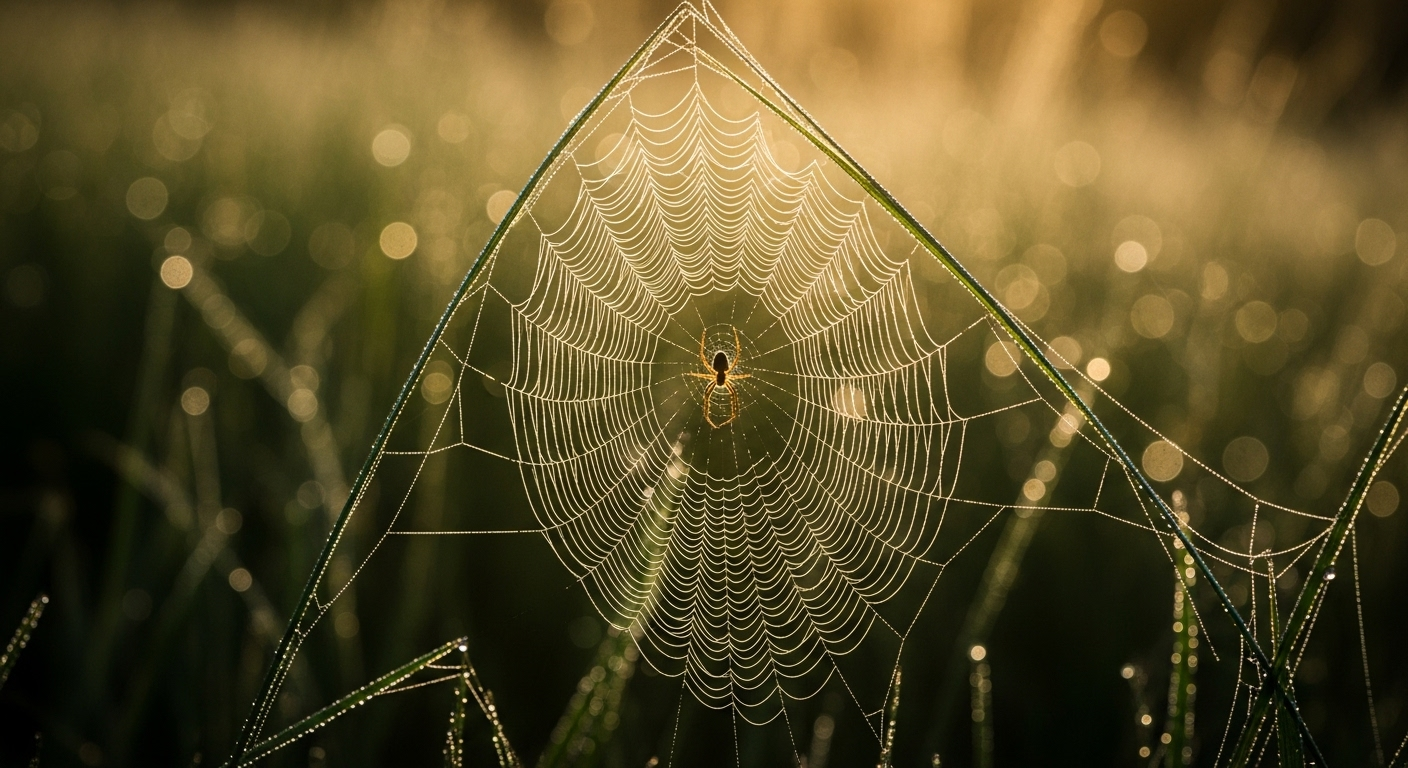Silent Guardians: The Intricate World of Spider Silk
Delve into the fascinating realm of spider silk, a marvel of nature that has captivated scientists and innovators alike. This extraordinary substance, stronger than steel yet more flexible than nylon, holds secrets that could revolutionize industries from medicine to aerospace. Join us as we unravel the mysteries of spider silk, exploring its unique properties, diverse applications, and the cutting-edge research propelling this ancient material into the future.

The Anatomy of Spider Silk
Spider silk is a protein fiber composed primarily of fibroin, a structural protein that gives the silk its remarkable properties. The composition and arrangement of amino acids in spider silk proteins contribute to its extraordinary strength and elasticity. Different spider species produce varying types of silk, each tailored for specific functions such as web construction, prey wrapping, or egg protection.
Nature’s Superior Engineer
The strength of spider silk surpasses that of steel by weight, while its elasticity rivals that of rubber. This combination of traits makes spider silk one of the toughest known materials in nature. Spider silk can absorb large amounts of energy before breaking, a property that has piqued the interest of materials scientists and engineers seeking to develop high-performance synthetic fibers.
Ecological Significance
In their natural habitats, spiders use silk for various purposes beyond web construction. Some species create elaborate traps, while others use silk as draglines for safety or transportation. The silk’s adhesive properties allow spiders to capture prey efficiently, playing a crucial role in maintaining ecological balance by controlling insect populations.
Biomimicry and Technological Applications
The unique properties of spider silk have inspired numerous technological advancements. Researchers are exploring its potential in creating biodegradable sutures, artificial ligaments, and even bulletproof vests. The biocompatibility of spider silk makes it an attractive option for medical applications, potentially revolutionizing wound healing and tissue engineering.
Challenges in Spider Silk Production
Despite its remarkable properties, large-scale production of natural spider silk has proven challenging. Unlike silkworms, spiders are territorial and cannibalistic, making farming them impractical. This has led scientists to explore alternative methods of producing spider silk proteins, including genetic engineering of other organisms like bacteria, yeast, and even goats to produce silk proteins.
Synthetic Spider Silk: The Future of Materials
Advancements in biotechnology have enabled the development of synthetic spider silk proteins. Companies and research institutions worldwide are working on scaling up production of these artificial silks, aiming to harness the material’s exceptional properties for commercial applications. From high-performance textiles to aerospace components, the potential uses of synthetic spider silk are vast and varied.
Environmental Implications
The development of synthetic spider silk could have significant environmental benefits. As a biodegradable and renewable resource, spider silk-inspired materials could potentially replace petroleum-based plastics in various applications, reducing environmental pollution and dependence on non-renewable resources.
Spider Silk in Art and Culture
Beyond its scientific and technological significance, spider silk has played a role in art and culture throughout history. From ancient Greek mythology to contemporary art installations, the delicate yet strong fibers have inspired creative expressions across cultures.
The Economics of Spider Silk Innovation
The market for spider silk-inspired materials is still in its infancy but shows promising growth potential. Estimates suggest that the global market for advanced fibers, including synthetic spider silk, could reach billions of dollars in the coming years. However, the high cost of production remains a significant barrier to widespread adoption, with current prices for synthetic spider silk products ranging from hundreds to thousands of dollars per kilogram.
Ethical Considerations in Spider Silk Research
As research into spider silk and its applications progresses, ethical questions arise regarding the use of genetic engineering and the potential impact on ecosystems. Scientists and policymakers must navigate these complex issues to ensure responsible development and application of spider silk technologies.
In conclusion, the world of spider silk represents a fascinating intersection of biology, materials science, and innovation. As research continues to unlock the secrets of this extraordinary material, we stand on the brink of a new era in sustainable and high-performance materials. From medical breakthroughs to eco-friendly textiles, the potential applications of spider silk-inspired technologies are bound only by our imagination and ingenuity. The silent guardians of our gardens may well hold the key to some of humanity’s most pressing challenges, weaving a future that is stronger, more flexible, and more sustainable than ever before.





